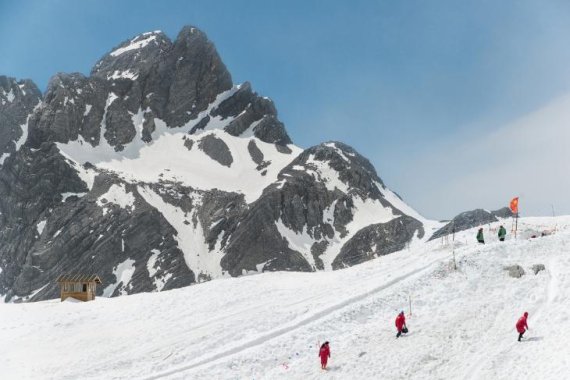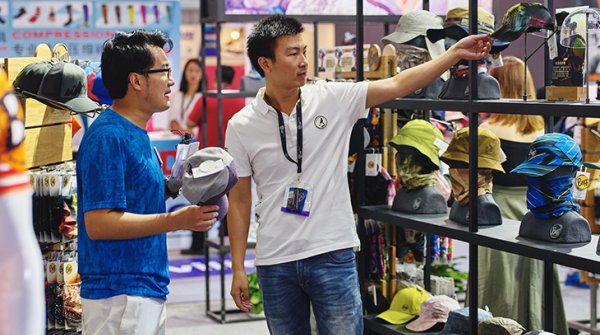
Where, how, when, and how much do the Chinese ski – and how well equipped are the ski resorts? These and many more questions were answered with the “White Book 2017 – China Report on Ski Resorts Industry” for the third time during the Asia Pacific Snow Conference at ISPO Beijing 2018.
Wu Bin, CEO of the Beijing Carving Ski Sports Development Corp., once again presented his status report on China’s winter sports industry. The 2017 report made one thing clear: Growth continues, but the exceptional rates of recent years have not been achieved.
A certain degree of saturation has occurred in comparison with previous years, particularly in the construction of completely new ski resorts and outfitting with chair lifts. Although 57 new resorts (703 total) were built from 2016 to 2017, representing a growth of 8.82 percent, the double-digit growth rates of recent years could not be maintained. Similar behavior was seen in chairlifts, whose numbers rose from 199 to 236, corresponding to growth of almost 19 percent.
The number of winter athletes in China’s 703 ski regions rose by around 16 percent compared to 2016, from 15.1 million to 17.5 million visits in 2017. To put that number into perspective, the number of winter athletes in Switzerland in the same period was approximately 23 million.
In this year’s report, Wu Bin paid particular attention to the expansion of ski resorts with chair lifts. That’s because what’s standard in Europe or North America continues to be an exception in China. Of the 703 existing resorts in China, only 145 are equipped with one or more chair lifts.
“This number continues to be problematic,” says Wu Bin in a talk with ISPO.com during ISPO Beijing. “Many readers initially focus on the total number of 703 resorts, but the more important figure is only 145 resorts with a chairlift. That’s because progressive work is being done here, and it’s where winter sports enthusiasts spend much more time.”
While three quarters of winter athletes spend two hours or less in ski regions without a chair lift, the number falls to 14.5 percent at well-outfitted resorts. In the period of three to four hours, the chairlift effect is most apparent in a positive sense. Instead of just 22.3 percent (without a chair lift), 73.8 percent of winter athletes will stay at a ski resort with a chair lift for up to four hours. Ski vacations with overnight stays are still generally a rarity, although the chair lift effect still plays a not-so negligible role. 11.7 percent instead of 3 percent speak very clearly in favor of chair lifts.
Other metrics Wu Bin determined in the White Book: The total area of China’s ski slopes covers about 3,500 hectares, with a total length of about 1,000 kilometers. There are currently 26 ski regions over 30 hectares, making up roughly 40 percent of the total area. The center of winter sports is still located in the northeastern part of China, in Heilongjiang province, where 124 ski resorts exist. The Beijing province sits at eleventh place in the Chinese ranking, with 24 ski resorts. Hebei province, which includes Chongli, the venue for the 2022 Winter Olympics, is in fourth place with 57 ski resorts.
Even though the winter sports boom was slowed down slightly in many areas, there were still two areas where growth continued to be stronger than in previous years.
Read here: The Grand Scale of China’s Winter Sports Projects
The demand for snow making machines rose by nearly 30 percent from 2016 to 2017, to a total of 6,600 machines, which is also directly linked to the second major growth sector. That’s because it’s not just the northern and northeastern parts of the country receiving strong support from the government and Chinese companies anymore, but also the markedly warmer regions in the south.
The enormous growth of indoor ski halls illustrates this. Whereas there were still twelve halls where it was possible to practice winter sports regardless of the outside temperature in 2016, the number has almost doubled to 21. However, the nineteen other indoor construction projects that will be completed in China in the next two years show that this demand is far from being satisfied.

 Sports BusinessSki Mountaineering Goes Olympic: What Milano-Cortina 2026 Means
Sports BusinessSki Mountaineering Goes Olympic: What Milano-Cortina 2026 Means
- ISPO awards
- Mountain sports
- Bike
- Design
- Retail
- Fitness
- Health
- ISPO Job Market
- ISPO Munich
- ISPO Shanghai
- Running
- Brands
- Sustainability
- Olympia
- OutDoor
- Promotion
- Sports Business
- ISPO Textrends
- Triathlon
- Water sports
- Winter sports
- eSports
- SportsTech
- OutDoor by ISPO
- Heroes
- Transformation
- Sport Fashion
- Urban Culture
- Challenges of a CEO
- Trade fairs
- Sports
- Find the Balance
- Product reviews
- Newsletter Exclusive Area
- Magazine




